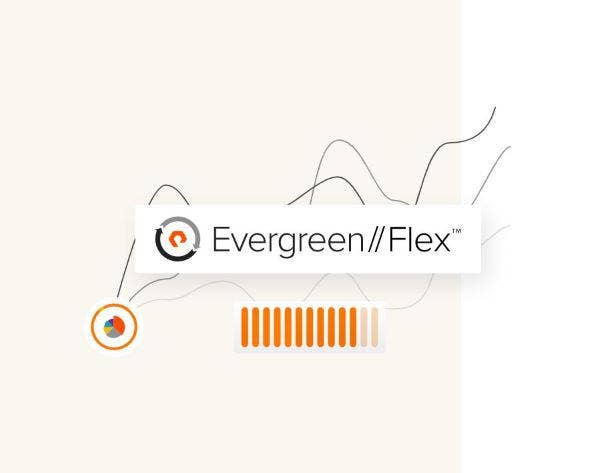Pure Storage Evergreen Subscription Separates Hardware, Software
‘Pure is doubling down on Evergreen with Evergreen//Flex, which expands the subscription from an array to a whole fleet while providing flexible options for subscription services. And we’re rebranding our existing procurement models to bring them under the Evergreen model,’ says Angad Narang, vice president of product management for Pure Storage.

Pure Storage Wednesday expanded its Evergreen storage subscription service with the ability for customers to have separate subscriptions for the hardware and software side of storage.
Evergreen now also allows spare capacity to be shared across a fleet of storage devices to let customers access capacity where needed without having to purchase more.
The Evergreen expansion was introduced at the Pure//Accelerate Digital techfest22 conference being held this week in Los Angeles.
[Related: The 50 Coolest Software-Defined Storage Vendors: The 2022 Storage 100]
Pure Storage has seen tremendous growth in its Evergreen portfolio, said Angad Narang, vice president of product management for the Mountain View, Calif.-based storage vendor.
“Pure is doubling down on Evergreen with Evergreen//Flex, which expands the subscription from an array to a whole fleet while providing flexible options for subscription services,” Narang told CRN. “And we’re rebranding our existing procurement models to bring them under the Evergreen model.”
Pure Storage’s Evergreen storage subscription service is aimed at halting the traditional way of upgrading storage by ripping and replacing existing storage arrays every three to five years because older storage technology is no longer supported or is expensive to maintain, Narang said.
“Evergreen was introduced 10 years ago as a way to get rid of forklift upgrade,” he said. “It lets hardware and software be upgraded without disrupting operations. Customers use it to modernize their storage systems across multiple generations of technology.”
There are customers who have been upgrading their arrays for 10 years because of Evergreen, Narang said.
“Ninety-seven percent of Pure Storage arrays more than six years age are still in production,” he said. “This shows how solid our Evergreen architecture is.”
Starting now, the Evergreen Gold subscription, which allows data to be migrated to newer storage technologies, will be known as Evergreen//Forever, Narang said.
New with Evergreen//Forever is the expansion to cover Pure Storage technology sold on a capex basis, on particular hardware and software SKUs, and term-based subscriptions, he said.
Pure Storage Wednesday also introduced Evergreen//Flex. While Evergreen previously was licensed for a single array, Evergreen//Flex has now been enhanced to work across a customer’s entire fleet of Pure Storage arrays, Narang said.
Most customers have multiple arrays, but it’s hard to predict their use, and so some arrays may be over-utilized and others under-utilized, he said. Complicating the issue is the fact that, while some businesses like the idea of treating storage as an operating expense, others want to treat it as a capital expense while still others like the cloud-like operating model but for regulatory or accounting reasons need to own the hardware side, he said.
“Evergreen//Flex is a new fleet-level architecture aimed at unlocking stranded capacity and moving it to where it is needed most,” he said. “The storage assets are disaggregated so the capacity can be move to where needed. The customer owns the array, but pays for the capacity. And budgets can start low and rise only as needed.”
Narang said Evergreen//Flex is not the same as capacity on demand, which allows excess capacity to be installed on-premises but paid for only as it is unlocked.
“With Evergreen//Flex, customers pay for the capacity used on site on a monthly basis,” he said. “And we can separate the hardware and software. ... This lets reserve capacity to be spread across a fleet.”
Also new on Wednesday was the move to rename Pure-as-a-Service, under which the storage arrays were owned by Pure Storage and offered to customers on a pure operating cost model, to Evergreen//One, Narang said.
Evergreen//Flex is a game changer for businesses, especially when combined with the new Pure Storage FlashBlade//S: which allows performance and capacity to be upgraded separately, said Justin Field, technical solutions architect for Pure Storage World Wide Technology, a St. Louis-based solution provider and early Pure Storage channel partner.
“Customers are asking for the ability to own the hardware while subscribing to a service,” Field told CRN. “These customers don’t want to fully move to the cloud. They want to depreciate their hardware. And with the support of Evergreen//Forever, customers of the new FlashBlade//S can continue to stay current with while upgrading their capacity or compute or both.”
Owners of earlier generations of FlashBlade arrays which have not yet gone end-of-life are still getting updated software and support, Field said.
“With Evergreen//Flex, they will get trade-in credit for what they have already spent,” he said. “Then they will get Evergreen//Forever so they get a clear path for their technology going forward.”
Jerrod Janes, vice president of technical presales for the Advanced Solutions Group of SHI International, a Somerset, N.J.-based solution provider and Pure Storage channel partner, told CRN the key advantage of Evergreen//Flex is the ability to buy what is needed when it is needed.
“Evergreen//Flex is not a full-on opex or capex model,” Janes said. “It’s the happy medium between them. Customers want to pay to pay for what they need when they need it. But do they want everything on the cloud? Flex gives them the ability to work both on-premises and in the cloud. They can start with the minimum needed on-prem, and add to it over time with the flexibility to move capacity from one platform to another and without buying three years of support on access capacity.”